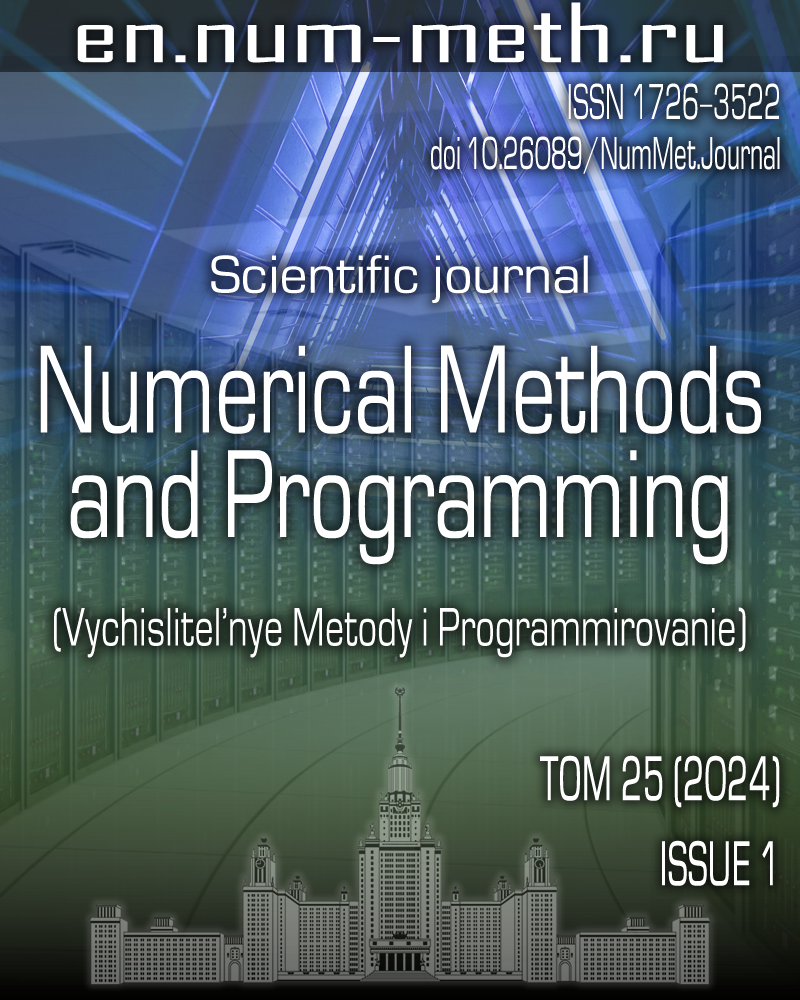DOI: https://doi.org/10.26089/NumMet.v25r108
Features of using iterative successive substitutions methods for calculating phase equilibrium with a capillary jump
Keywords:
Abstract
This article presents modifications of Successive Substitution methods that are used to calculate the phase equilibrium of a multicomponent thermodynamic system. As an example, two methods are considered: the Successive Substitution method and the Quasi-Newton Successive Substitution method. These methods can be used to calculate the equilibrium between gas and liquid phases with a capillary pressure jump. To check the correctness of these methods, the results of calculations of both phase equilibrium at set temperature and pressures in the phases and phase diagrams for different temperatures were compared with each other. A low error in the results was obtained when calculating the phase equilibrium of a multicomponent mixture taking into account the capillary pressure jump for volatile oil.
Published
Issue
Section
References
- M. B. Panfilov, Physicochemical Fluid Dynamics in Porous Media: Applications in Geosciences and Petroleum Engineering (Wiley, Weinheim, 2019; Intellect, Dolgoprudnyi, 2020).
- A. I. Brusilovsky, Phase Transformations in the Development of Oil and Gas Fields (Graal, Moscow, 2002) [in Russian].
- O. Yu. Dinariev and N. V. Evseev, “Role of Capillary Forces in Filtration of a Gas–Condensate Mixture near a Well,” Inzh. Fiz. Zh. 77 (2), 17-23 (2004) [J. Eng. Phys. Thermophys. 77 (2), 266-274 (2004)].
doi 10.1023/B: JOEP.0000028503.58759.9b - P. Bedrikovetsky, Mathematical Theory of Oil and Gas Recovery (Springer, Dordrecht, 1993).
https://doi.org/10.1007/978-94-017-2205-6 . Cited February 14, 2024. - A. Firoozabadi, Thermodynamics of Hydrocarbon Reservoirs (McGraw-Hill, New York, 1999).
- T. Ahmed, Reservoir Engineering Handbook (Elsevier, Burlington, 2006).
- P. Donnez, Essentials of Reservoir Engineering (Editions Technip, Paris, 2007).
- M. I. Raikovskyi, A. Yu. Demianov, and O. Yu. Dinariev, “On the Accounting of Capillary Forces in the Modeling of Gas-Condensate Mixtures,” Oil and Gas Studies, No. 2, 37-52 (2022).
doi 10.31660/0445-0108-2022-2-37-52 - L. Wang, J. Ismailova, Y. Uteubayeva, et al., “Effect of Pore Size Distribution on Phase Behavior of Sour Gas and Hydrocarbon Mixtures in Tight Oil Reservoirs,”
https://doi.org/10.2118/202567-MS . Cited February 15, 2024. - V. P. Skripov and A. V. Skripov, “Spinodal Decomposition (Phase Transitions via Unstable States),” Usp. Fiz. Nauk 128 (2), 193-231 (1979) [Sov. Phys. Usp. 22 (6), 389-410 (1979)].
doi 10.1070/PU1979v022n06ABEH005571
License
Copyright (c) 2024 М. И. Райковский

This work is licensed under a Creative Commons Attribution 4.0 International License.


